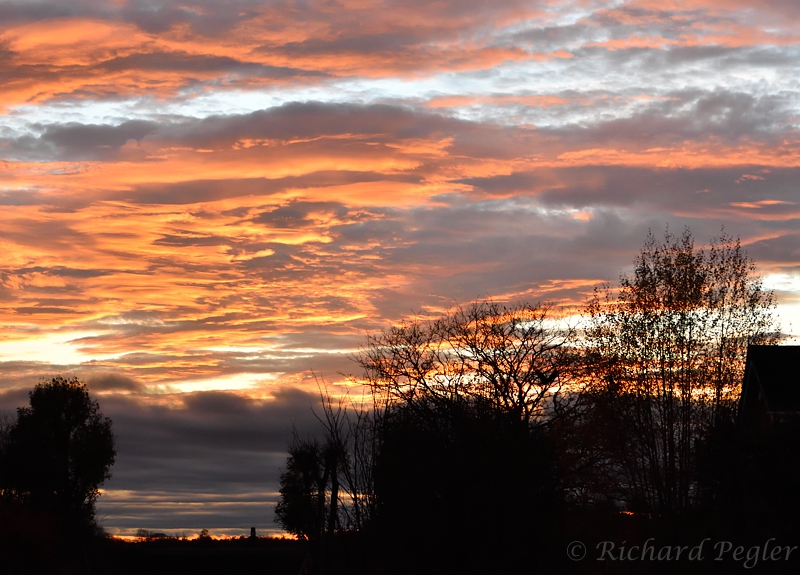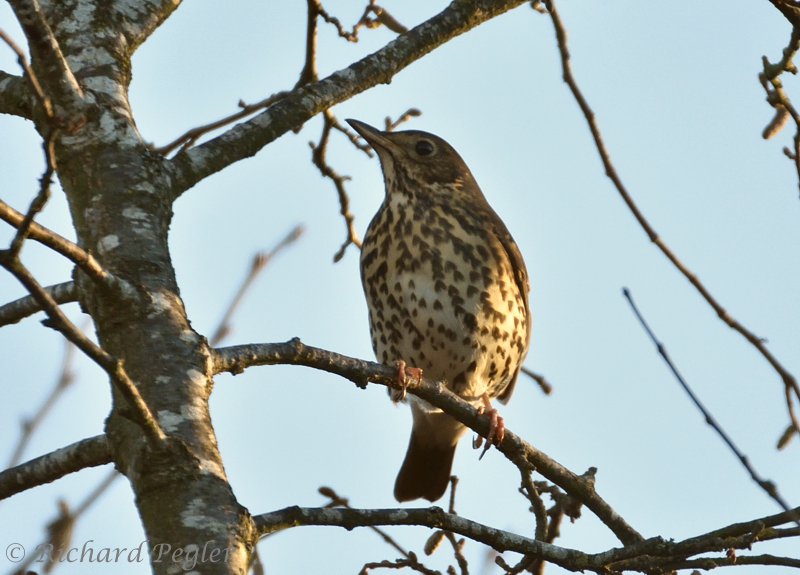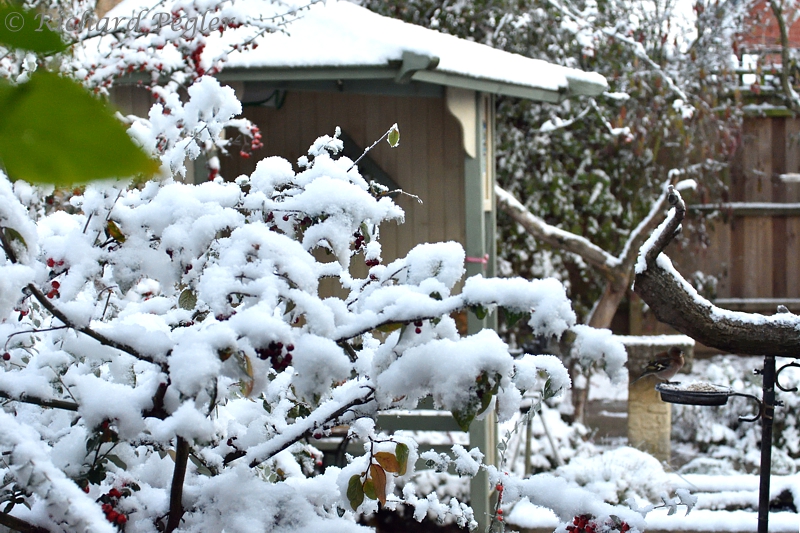The second half of November was, in terms of my birdwatching, even quieter than the first half, with my only trip out being on the last day of the month. It was not, however, without interest in the garden.
Tuesday, 16th November
Coal Tit is an occasional visitor to our garden. Sometimes we can go for months without seeing one, but at the moment we are seeing one most weeks. However, they tend to zoom in, grab a seed, and then immediately disappear to consume it - I tend to think of them as smash-and-grab artists. All this usually takes place at the top end of the garden, and I rarely manage a photo. On this occasion, one stopped momentarily outside my study window, and the camera was at the ready!
 |
| Coal Tit (Periparus ater) - garden on 16th November, 2021 |
We had been having some fine sunsets around this time, and Lindsay called me through to the front of the house to see this one.
 |
| Sunset - from front of house on 18th November, 2021 |
Sunday, 21st November
We had a pleasant surprise this day with the arrival of a Pied Wagtail in the garden. Whilst this is a relatively common bird, it has been a very infrequent visitor to the garden. I am not sure whether this is a male or a female, as all the reference books I have show, and discuss, males in breeding and non-breeding plumage, and females in breeding plumage, but make no mention of females in non-breeding plumage and even mention confusion over this aspect! At first I had this down as a female, but I'm now inclined to think that it is probably a non-breeding male. Comments will be welcome!
 |
| Pied Wagtail (Motacilla alba yarrelli) (male?) - garden on 21st November, 2021 |
The wagtail returned this day but was not photographed. We did, however, see Wren which is undoubtedly present more often than seen, and always a delight to behold.
 |
| Wren (Troglodytes troglodytes) - garden on 22nd November, 2021 |
 |
| Viburnum splendens - garden on 22nd November, 2021 |
One of life's greatest mysteries will be - how ever did a caterpillar get into the bath in our upstairs bathroom, when all the windows had been closed for weeks? I can only suggest that, as I had been doing some gardening over a couple of days, it had dropped onto me and I had brought it in on my clothing. I have not been able to positively identify this caterpillar, but think that it is probably the larva of a Dark Arches moth.
 |
| Dark Arches? (Apamea monoglypha?) - from the house on 27th November, 2021 |
Sadly, Song Thrush is in desperate decline and now rarely visits our garden. We did, however, have a very brief vist from one this day.
 |
| Song Thrush (Turdus philomelos) - garden on 28th November, 2021 |
This was a remarkable day in that, in the morning, I was greeted by snow when I looked out of my study window.
 |
| view from my study window on 29th November, 2021 |
 |
| Robin (Erithacus rubecula) - garden on 29th November, 2021 |
I took a few photos of other common birds.
 |
| Blue Tit (Cyanistes caeruleus) - garden on 29th November, 2021 |
 |
| Chaffinch (Fringilla coelebs) (male) - garden on 29th November, 2021 |
Tuesday, 30th November
The snow had all gone and I did spend some time trying to photograph a few birds in the garden. A Pied Wagtail found my garden mini-pond. I'm even less sure about the sex of this one, and it looks a little different to the one shown earlier in this post - although that may be just a trick of the light and the pose of the bird(s).
 |
| Pied Wagtail (Motacilla alba yarrelli) - garden on 30th November, 2021 |
 |
| Nuthatch (Sitta europaea) - garden on 30th November, 2021 |
 |
| Carrion Crow (Corvus corone) - garden on 30th November, 2021 |
I find that Carrion Crow can look quite menacing sometimes.
I took a late afternoon trip out to the nearby Longmoor Lake in the hope of finding some owls as I have, in the past, seen both Short-eared Owl and Barn Owl at this location at this time of year. This was my only trip out in the second half of the month.
The light was already fading by the time I got to the lake at around 15h00. Shortly after I arrived, the numerous geese started to depart in groups, each group shouting their intentions to each other before departing. This is behaviour that I have witnessed many times before at the end of the day.
 |
| departing Greylag Geese (Anser anser) - Longmoor Lake |
 |
| Reed Bunting (Emberiza schoeniclus) (female) - Longmoor Lake |
 |
| Wigeon (Mareca penelope) (female + male) - Longmoor Lake |
 |
| Wigeon (Mareca penelope) (male) - Longmoor Lake |
I did not succeed in finding any owls and so started heading back past the lake. When I was about halfway along the lake, a cacophony of sound started building up to amazing levels and, to my utter surprise, all the geese returned to the lake. This is something that I have not witnnessed before. I'd assumed that when these birds had departed, just before sunset, they were heading off to an overnight roost. I'm now wondering if they departed to find their supper, before returning to roost on the water. This image, below, is just a small part of the returning birds.
 |
| Canada Geese (Branta canadensis) + Greylag Geese (Anser anser) - Longmoor Lake |
Thus ended a month in which I largely relied on my garden to maintain my wildlife interest. So far, in December, I have not fared much better, and the run-up to Christmas is not likely to improve that situation. However, the garden has been rather more interesting than usual, so I already have enough material for another blog post, which will probably appear between Christmas and New Year as I intend to take a short break from blogging, although I will try and visit your blogs.
In the meantime, I hope you have a wonderful Christmas and that 2022 will bring some sanity to the world for us all - please take good care of yourselves and Nature. Best wishes - - - Richard




































